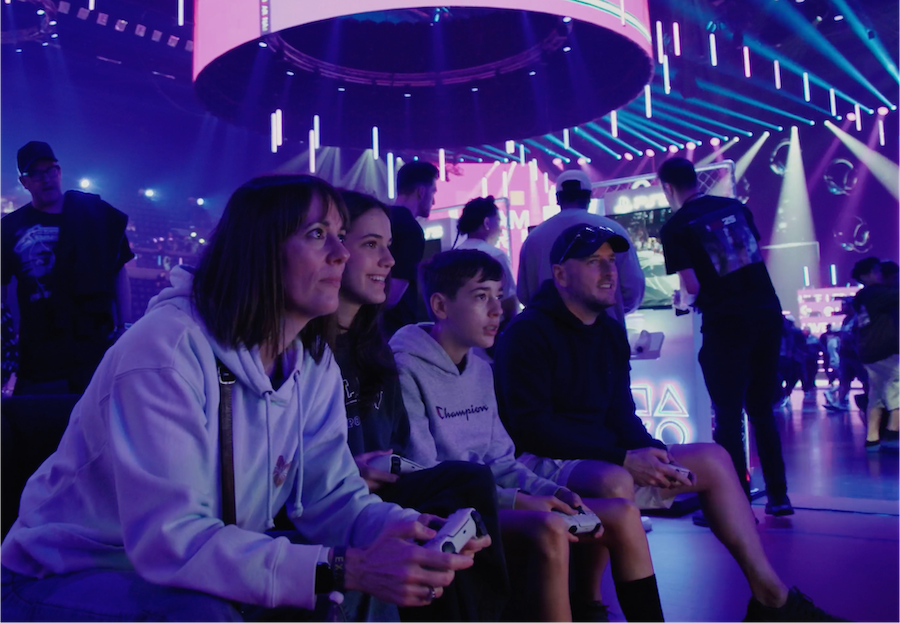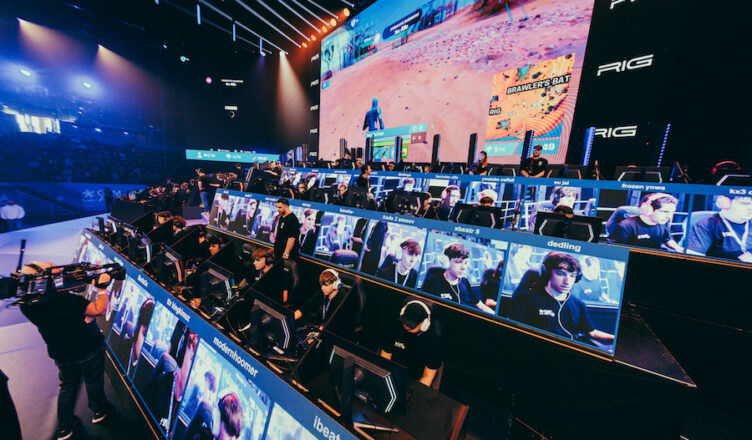Think gaming is all spotty teenagers shooting things in pizza-encrusted bedrooms? Think again. A massive 79% of us are ‘gamers’ – hello online crossworders – and many welcome brands into their virtual worlds.
Jonathan Jansen was on a farm in the middle of nowhere in Oregon when he realised just how powerful gaming is as a medium.
Let’s rewind to 2013. Jansen, who is now CEO of the New Zealand Esports Federation, was one of the country’s first major streamers.
Via his channel Arkadian, he was creating content on a “really niche game” from League of Legends on YouTube and an early version of Twitch. Like the game, his audience was also fairly niche – or so he thought.
Then he was on holiday in the US and a group of teenagers recognised him at a horror maze in Eugene, Oregon, a city about half the size of Christchurch.
“I was there with some friends and there was a group of people behind us. My friend heard one of them going, ‘Oh my God is that Arkadian? I can hear his voice,’” says Jansen.
In that moment he realised the “wild reach and scale” of both gaming and the internet.
Gaming’s rise as a media channel
Why is this important for marketers? Simply, gaming is where the audiences are, especially those hard-to-reach younger demographics, says Scroll Media General Manager Scott Hughes.
“If you’re not there, there’s a huge risk of not being seen. The results we’re seeing are incredible. All the measurements for brand uplift, attribution, attention – gaming is absolutely blitzing everything. It’s become so popular around the world.”
According to the NZ Plays Report 2023, 79% of all New Zealanders play video games – that’s up from 73% in 2021.
Of that 79%, a large proportion (myself included until writing this article), don’t actually consider themselves gamers, says Hughes.
But they are because gaming doesn’t require a console or a PC – if you do Wordle every day or an online crossword, that counts too, he adds.
In fact, the NZ Plays Report found mobile is the most-used device for gaming across Aotearoa, says Hughes.
“Mobile is what’s driving all of it. Even PlayStation has launched a specific mobile division. It’s hyper casual and the types of games they play will change by age,” he adds.
This can be attributed at least in part to the internet, says Zane Furtado, Co-owner and General Manager Technology and Innovation at digital media agency Acquire.
Data packages are more affordable, people are using their phones more than ever, especially while out and about, and games are an easy way to pass downtime – available everywhere from Netflix to LinkedIn, he adds.
But despite capturing and holding the attention of large audiences across every age group, gaming remains massively underinvested in, especially in Aotearoa, Hughes says.
Many worry games aren’t a safe arena for their brand to advertise in, or they don’t want to be associated with certain games because they use guns or showcase violence. But these perceptions hold brands back because somebody else will move into that space ahead of them and reap the benefits, says Hughes.
A place for everyone
This is what Scroll Media and Acquire help agencies and brands figure out – how should they show up in the games?
Hughes sums it up by saying gaming is just like any new channel. He encourages the industry not to be afraid, instead, test and learn is the key.
“Everybody has a place in gaming – that place can be very, very different depending on who you are as a brand.”
There are three main ways to do this, says Hughes. The first is referred to as in-game ads, which could be a branded ring in a boxing game, banners on the overpass in a racing game, or programmatic billboards in a game featuring Times Square – “It’s truly digital out of home,” laughs Hughes.
“You wouldn’t go to Eden Park and watch the All Blacks and not see any ads – the ads actually make it feel like it’s the real stadium with the real positioning and structure.”
Products and people can also be marketed here. Examples of this are Travis Scott’s concert inside Fortnite or characters using branded products in the game world.
It’s fun, and it’s not intrusive. Rather, it builds brand awarness and affinity, adding to the experience, says Hughes.
In-game ads typically aren’t clickable, so this is where the second method, around the game, comes in, which tends to be more mobile-oriented.
On Subway Surfers for example, at the end of a run players can choose to either continue or get a reward, like an extra life, in exchange for engaging with an ad.
“You get a token at the end of it for engaging with the ad, but you’re choosing to engage – unlike skippable and unskippable ads,” says Hughes.
As it never interrupts game play, this method is very effective, he adds, seeing high completion rates from 85% to 95%, as well as high engagement and click through rates – from a vanity metric point of view, it outperforms many other channels.
The ads can be video, audio or static, and typically reuse the brand’s content from other mediums, such as YouTube.

The third method is referred to as away from the game – where brands will make partnership deals with esports athletes, streamers or the gaming company itself.
Hughes describes a recent Scroll Media campaign with Lenovo, where brand messaging was pushed out via streamers across the Asia-Pacific region.
Streamers trigger marketing assets at any point in their content and then talk about the product in their own style – making it more engaging and authentic.
Putting in the work
A recent piece of research, The Anatomy of Hype – conducted by livestream service Twitch, Amazon Ads and Crowd DNA – looked into the nature of fandoms and found overall that Gen Z audiences are really welcoming to brands in the gaming space.
“Even if they don’t have anything specific to do with that fandom – so long as they put in the work,” says Gemma Battenbough, who leads Twitch’s brand partnership studio for Europe and Asia-Pacific.
Since its humble beginnings in 2011, Twitch has become the world’s largest livestreaming service, with a diverse group of 2.5 million people across 35 different languages tuning in at any given time.
Battenbough says the service aims to help brands connect with its audience. Recent initiatives include a new AI tool that identifies great moments of gameplay and turns them into an instant replay, which can then become branded moments.
One of her favourites is The Glitch, a Twitch universe in Fortnite that allows brand collaborations. Domino’s was one of the first to get involved, with its own pizzeria integrated into the gameplay.
Stream Together is another, which allows streamers to collaborate during a livestream. These moments can be faciliated by brands and act as an opportunity to bring together different communities with a shared interest.
“Don’t just turn up and slap your logo on something. Actually get involved and build something that the community can play with that can enhance the experience for them and build connections for that community,” says Battenbough.
“They want to be the protagonist in the content, they don’t want to be broadcast at.”
Sam Ramlu, Founder of Method, a creative tech studio that specialises in making gamified experiences for brands and corporates, agrees.
She adds balance is key. “I think people underestimate the value of games and how much time you spend with a game.

“If you imagine you’ll watch a movie for an hour and a half, two hours. You might watch it again, a few years later. But a game you could be playing over and over.”
It means any marketing engagement in this space needs to be subtle and fit in with the game’s story, so as not to encroach on the person’s entertainment time and their space.
“Like anything though, if it goes too far, what are you then doing? Are you still telling the story or are you now trying to peddle your wares?” asks Ramlu.
The size and revenue of the gaming industry, coupled with the sheer number of people who game, makes it an important space to be in – but it’s also about making life more fun, she adds, which is Method’s key goal.
Method’s work includes an exhibition at Sea Life Kelly Tarlton’s in Auckland, where people can digitally create their own sea creature and add it to the virtual aquarium. The company also has a digital version of boardgame The Game of Life for insurance company MAS, as well as a mini game promoting water safety for DHL and Surf Life Saving Australia.
“You’ve got the pure, fun-based ones, but then you’ve also got the ones that are fun but also have quite a good or important message to them as well. It’s getting people to have fun but it’s also getting them to think,” says Ramlu.
Know your audience
Ramlu’s point about knowing your audience is imperative – especially when trying to reach the esport athlete community, says Hughes.
In 2021, a Coca Cola campaign, ‘One Coke Away From Each Other’, was criticised for being tone deaf and painting an inaccurate picture of what it is like to be an esports gamer.
But a year later, Heinz’s collaboration with Call of Duty, Hidden Spots, was celebrated for the way it gave gamers something useful: an in-game map with all of the best spots to hide in during a match. Letting their avatars hang out in these spaces gave players time to take a breather and have a snack in real life.
Gamers are a loyal bunch, says Hughes, and as such he urges marketers to think about how they can support the gaming industry and talent in an authentic way.
“Because the gaming community will recognise it. It’s almost like a grassroots approach… people appreciate it and they come through.”
Besides, there’s definitely the appetite for it, says Furtado. Just look at all of the Kiwis who turned up at Spark Game Arena Live in early September.
A couple of thousand showed up to each session of the festival, the first of its kind to be held in Aotearoa, says project lead and marketer Ally Young.
Spark had been working on the festival for the last couple of years, she adds.
“We identified that gaming was one of the ways New Zealanders were now engaging on digital channels, so obviously we wanted to get involved with that.
“There was an insight that New Zealand gamers were missing out on the gaming world. All these amazing events held all over the world, but it was just too far away for them to participate in New Zealand.”
Authenticity became a key theme here – it was important not to just “show up,” so the Spark team collaborated with a number of experts to bring the best of gaming to Aotearoa, says Young.
This included esports tournament company Let’s Play Live, education group Digital Natives Academy and the New Zealand Game Developers Association.
The aim was to capture as many of those Kiwis who play games as possible, so the festival was split into two halves, with a family-focused morning and then the afternoon focused more on R16 games, says Young.
Money, money, money
Tournaments were held throughout the day, including one for Valorant, hosted by Red Bull, and one for Fortnite where competitors played for the Rise Cup, a share of the $240,000 prize pool as well as gaming equipment.
The cool part is that anyone can give gaming a go, she adds, and this was her favourite aspect of Spark Game Arena Live – seeing all of the community and family interactions.
“Normally you see the parents telling the kids what to do, but it was the other way around. And the parents weren’t on their phones, they were fully absorbed with what their children were up to.
“Everyone thinks gamers are spotty teenagers in a basement eating pizza and staying up all night, and actually that can’t be further from the truth.”
The new Hollywood
With the first-ever Esports Olympics scheduled for 2025 in Saudi Arabia, the growth of the gaming industry shows no signs of slowing down.
Jansen likens gaming and the surrounding online universe to the “new Hollywood”.
Ask any classroom of students what they want to be when they leave school and he bets the majority would say “YouTubers”, or “professional gamers.”
“Our young people grew up looking at smartphones, watching YouTube videos and their Monica and Chandler or Brad Pitt and Angelina Jolie were PewDiePie, Mr Beast and Jenna Marbles – all of them YouTubers.”
With video game design now being taught in high schools, and the capability for content creation made easier through apps such as CapCut and Canva, young people feel they have a chance to be like the characters they idolise online, he adds.
And when you can create content from your bedroom that reaches hundreds of thousands of people – more than can be held in the biggest arena in New Zealand – it’s a very alluring opportunity.
While this shift seems to be a viral cultural phenomenon, this change in entertainment consumption has been happening for years, with the younger generations brought up watching YouTube videos instead of TV, says Jansen.
Find your people
And these days, it doesn’t seem to matter what your interests are, there’s a game or community for you.
That’s exactly what Battenbough saw earlier this year at TwitchCon, Twitch’s international gaming convention, where she witnessed emotional first-time meetings between online friends.
“It really brought home to me how important these communities can be for people,” she says.
The Covid-19 pandemic in particular made people realise how much they value those they can share their passions with – “I know so many people who started playing games with their grandparents overseas,” adds Battenbough.
What Twitch has created through gaming is a place where people can be themselves, she says.
“To have fun, to do what they love together and unlock lasting connections with other people that share the same interests.”
This was first published in the December-Janaury 2024/2025 NZ Marketing Magazine issue. Subscribe here.






